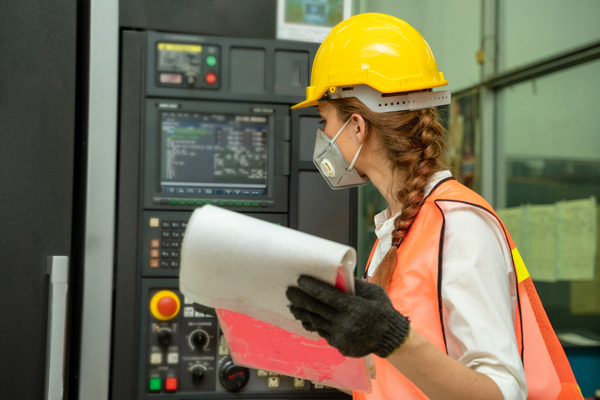The P-F Curve
The P-F Curve is a graphical model to visualize the condition of an asset with respect to time. It is useful in explaining the concept of condition-based maintenance and other related concepts.
The P-F Curve represents a relationship between the asset condition and time. It can be seen in the model that at the start of a failure, the asset condition begins to decrease until it reaches the functional failure (F). The general goal of asset inspections in a predictive maintenance plan is to detect condition deterioration before the asset reaches its functional failure.
La curva P-F
La curva P-F es un modelo gráfico para visualizar la condición de un activo respecto al tiempo. Es útil para explicar el concepto del mantenimiento basado en la condición y otros conceptos relacionados.
Nuevas recomendaciones de seguridad para COVID-19 para departamentos de mantenimiento
Las recomendaciones y consejos se desarrollan para acciones en la fabricación, la generación de energía y las industrias pesadas. Esta guía debe implementarse junto con los estándares de OSHA y para industrias específicas (29-CFR-1910 Subparte I - Estándares de equipos de protección personal en la industria general, 29-CFR-1910.134 Estándar de protección respiratoria, 29-CFR-1910.1030 Patógenos transmitidos por la sangre).

New Safety Recommendations for COVID-19 in Maintenance Departments
The recommendations and tips are developed for actions in the manufacturing, power generation, and heavy industries. This guidance must be implemented in conjunction with OSHA Standards and for specific industries (29-CFR-1910 Subpart I-Personal Protective Equipment standards in general industry, 29-CFR-1910.134 Respiratory Protection standard, 29-CFR-1910.1030 Bloodborne Pathogens).

Alineación de rodillos en industria del acero
Para aquellos que estéis medianamente familiarizados con la industria del metal, sabéis que el acero se procesa en bobinas. Pues bien, el procesamiento del acero se realiza en gran parte mediante rodillos, ya sea en frío o caliente.
El acero es la aleación del Hierro y el Carbono. Hasta aquí es lo que yo sabía antes de empezar a realizar trabajos de alineación de rodillos en la industria del acero.
Roll Alignment in the Steel Industry
For those of you who are fairly familiar with the steel industry, you may know that steel is processed in coils. Well, steel processing is mostly done by rollers, either hot or cold.
Steel is the alloy of Iron and Carbon. So far, this is what I knew before I started doing roll alignment work in the steel industry.
And this is what I've learned over time. To manufacture steel, a mixture of iron ore (with impurities) and a fuel called coke can be poured into a blast furnace. If it is made from scrap metal, it is previously melted in an electric blast furnace.
Taxonomy for Assets Hierarchy
To understand how the hierarchy of assets is defined, we must first understand what taxonomy is. According to ISO 14224, it is a systematic classification of elements into generic groups based on factors possibly common to all aspects (location, use, the subdivision of equipment, etc.). In other words, taxonomy is in charge of creating the identification of assets according to their position in the hierarchy based on the factors mentioned above.
Taxonomía para la jerarquía de activos
Para entender cómo se define la jerarquía de activos, primero debemos entender que es la taxonomía. Según la norma ISO 14224 es una clasificación sistemática de elementos en grupos genéricos basados en factores posiblemente comunes a todos los elementos (ubicación, uso, subdivisión de equipos, etc.). En otras palabras, la taxonomía se encarga de crear la identificación de los activos de acuerdo a su posición en la jerarquía basada en los factores antes mencionados.
If You're Going to Align a Coupled Shaft Fan, Read This Before
Fans in the industry can be found in a wide variety of sizes and for different applications. In this article, I refer specifically to fans with direct coupling to the motor.
First of all, a little context. We all have an intuitive understanding of what a fan is for. The vast majority of industry fans use radial fans, which have a slightly different operating principle than axial fans, which we are probably familiar with from domestic applications. Thus, it is common to find radial fans in the industry for circulation or transport of air or gases, gases exhausting, or for cooling.
Si vas a alinear un ventilador acoplado, lee esto antes
Ventiladores en la industria pueden encontrarse en gran variedad de tamaño y para diferentes aplicaciones. En este artículo me refiero específicamente a ventiladores con acoplamiento directo con su motor.
